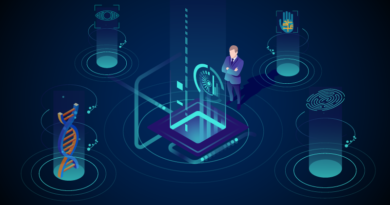How These Technologies Are Helping the Healthcare Industries In 2020
Technology is shaping our life in many aspects. The Healthcare industry is also utilizing the benefits that technology can offer. With digital healthcare technology such as VR/AR, artificial intelligence, robotics, 3D printing, and nanomedicine healthcare industry is going forward at a rapidly increasing speed. Advanced technology is offering more efficient, accurate, and time-saving ways to detect, diagnose, treat complicated diseases as well.
In some cases, it also offers cost-saving options for the healthcare industry. The Healthcare industry and technology should walk and work for hand in hand for a better future. Healthcare workers also need to grab their control over these technologies.
Technology and Healthcare
Digital technology has the potential to transform those unsustainable healthcare systems into sustainable ones. Apart from this, it also can equalize the relationship between patience and medical persons. With a cheaper, more effective, and faster solution, the medical industry will go a long way within a short period. Here are some examples of those technologies that have taken the healthcare industry to a considerate level and are still taking it forward.
AI or Artificial Intelligence
Artificial intelligence has the potential to restructure the healthcare industry. In the past few years, it has come a long way. Several medical executives have already started using AR in their operations.
Recently, Google DeepMind has created Artificial Intelligence in order to analyze breast cancer. This technology has performed better on an average of 11.5% than all human radiologists. A lot of massive institutions are planning to increase their budget. Here is the information for last year’s budget
| Usage of AI in Healthcare | 2017 Adoption | 2018end Adoption |
| Disease management | 29% | 42% |
| Patient safety and quality | 25% | 33% |
| Cancer care | 4% | 12% |
| Clinical decision support | 46% | 59% |
| Re-admissions | 33% | 41% |
| Supply chain management | 13% | 21% |
| Population health | 33% | 46% |
| Medical costs / health plan | 21% | 38% |
VR or Virtual Reality
We all know a little much about VR or Virtual reality. Yes, though it is mainly connected with entertainment, it has it tide in the healthcare industry as well. For both the patient and the physicians, VR has brought a lot of benefits.
- Virtual can be used in order to teach and train surgeons in a more realistic and low-risk environment.
- VR provides rehabilitation and therapeutic potential in order to treat anxiety disorder and acute pain.
Due to these reasons, VR is considered one of the most efficient and cost-effective tools for both the treatment and teaching process. It is expected that VR healthcare services will rise from $8.9 million in 2017 to around $285 million in 2022.
Nanomedicine
Nanomedicine is gradually developing at a faster rate. It controls individual molecules, atoms at the extremely “nanoscale” minute. In order to prevent, diagnose, and treat various diseases, nanomedicine has a considerable effect. As an example, you can take the reference of best liquid vitamins, which are used in a more effective way than traditional vitamin pills. Nanomedicines are creating ways to recover complex conditions like cancer with its more efficient targeting along with delivery systems with respect to conventional medicines. Reports say that the worth of nanomedicine’s global market will reach over $350 billion by 2025.
3D Printing
Since it was launched, 3D printing has covered a long way. And the healthcare industry is one of its live examples. 3D printing is offering faster prototypes along with creating almost everything from “polypills” to personalized prosthetics.
With its customizable aspects, 3D printing is able to revolutionize organ transplant, tissue repair as well as producing artificial skin for burn victims.
Robot-Assisted Surgery
When we are talking about technology in the healthcare industry, how can we forget about robotic surgery? Robot-assisted surgery has become a favorite of the next generation’s hospitals and doctors as well. It allows them to perform complicated and delicate operations, which was impossible to perform without it.
Here surgeons need to control a device with mechanical hands and a camera that provides a high-definition view of a particular surgical site. So, it becomes easy and more efficient for surgeons to access those sites.
Robot-assisted Surgery
- It improves control, flexibility, and precision.
- With its minimum invasiveness, it offers less apparent scars.
- It has lesser complications, such as infections.
Biometrics
While biometrics have been around for quite some time and has been benefiting many industries, it is applicable to healthcare as well. For instance, patient identification has been quite problematic within the US healthcare system. Since there is no effective patient identifier present, different healthcare providers use different means of identifying their patients. However, responsible healthcare providers are using RightPatient to accurately identify their patients, bringing several benefits for themselves and their patients.
RightPatient is a biometric patient identification platform that attaches patients’ photos and their biometric data to their medical records during registration. After enrollment, patients only need to look at the camera – the platform runs a biometric search and provides the appropriate EHR (electronic health record) within seconds. This enhances patient safety, prevents duplicate medical records, improves healthcare outcomes, and boosts the bottom lines.
Virtual Healthcare
Does this name sound unfamiliar? Well, you may have heard about telemedicine or telehealth. Yes, both are the same. Doctors and patients can use technology remotely using technology such as video conferencing or a mobile application with Virtual healthcare. There are also some patients who wear a technical device in order to monitor their health conditions and share the monitored data with doctors. Fit bands or waterproof fitness trackers are other examples of devices that can monitor your health condition to a basic level.
It offers a more convenient and time-saving way to get a doctor’s consultation. But on the other hand, some patients fear losing a personal connection with their closest doctors. A study has shown that the U.S Health System can save up to $7 billion every year if all patients choose virtual healthcare in place of having a face-to-face visit.
Conclusion
We are living in a revolutionary era. Technologies are improving the healthcare system day by day. Every morning brings a newer vision for the medical system. We have already discussed some of the digital technologies. There are a lot more
- Revolutionary drug development
- Genome sequencing
- Medical tricorder
- AR or Augmented Reality
- Wearable medical trackers and sensors
So, it is clear that technology improves the healthcare system every day and will continue to do so. We also should embrace new technologies in the medical industry and avail their benefits rather than clinging to the old traditional ways of the healthcare industry.











